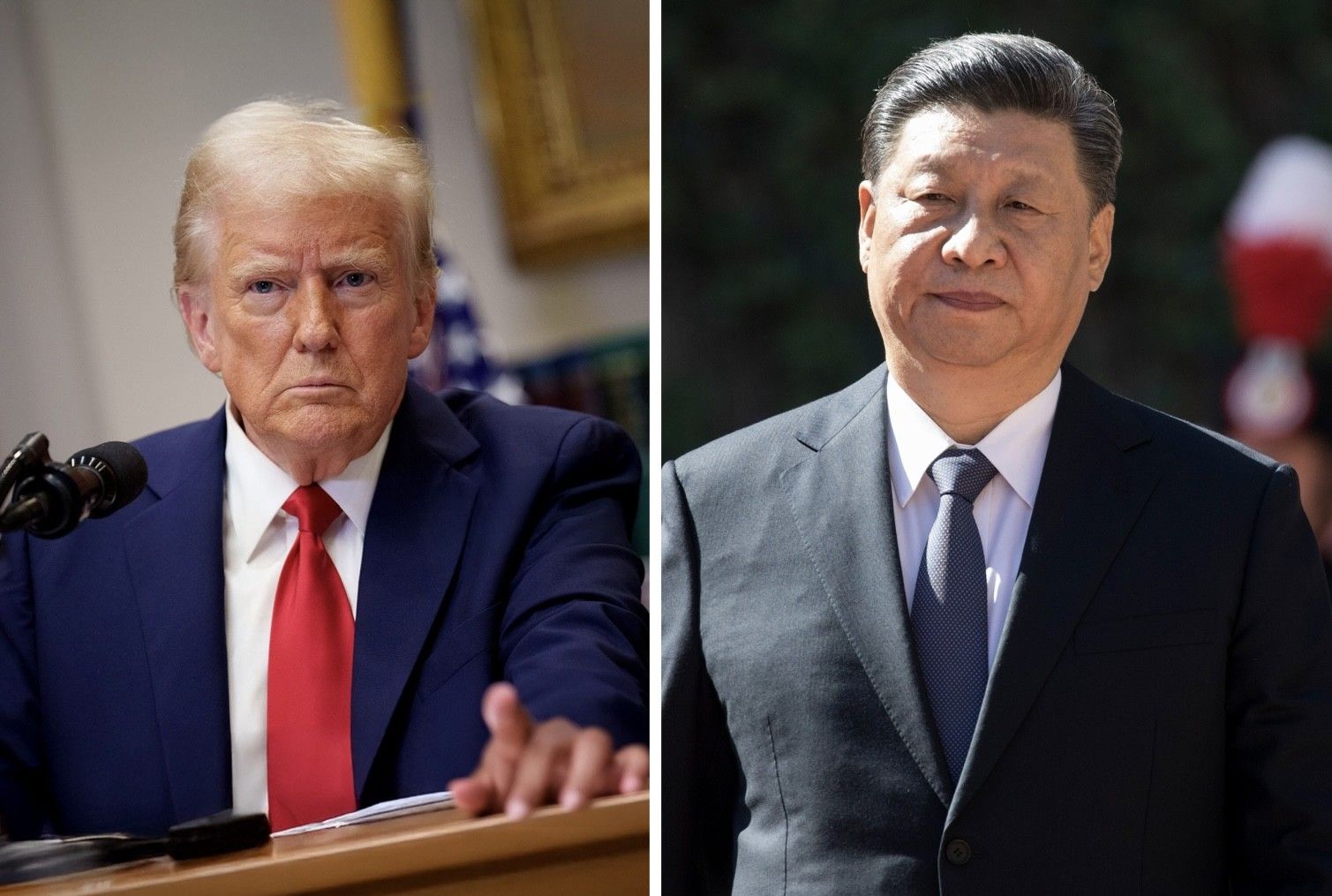On Monday, U.S. Treasury Secretary Scott Bessent announced a framework agreement with He Lifeng, China’s top economic official, to save TikTok despite a 2024 law aimed at banning it from Americans’ phones. Donald Trump and Xi Jinping are scheduled to speak on Friday to finalize the deal.
The announcement raised hopes not just for preserving Americans’ access to one of the most popular apps in the world, but also for real progress in the fraught relationship between the world’s two most powerful countries — a relationship that seemed headed toward serious conflict just five months ago.
Then, on Wednesday, reports emerged that Chinese regulators had directed China’s major tech companies to stop purchasing Nvidia-made AI chips. Suddenly the possibility of productive relations was again thrown into doubt.
It’s certainly too soon to proclaim a new start to the relationship. But it’s also premature to accept the self-serving contention of those pushing conflict that China holds only ill intent. Trump could all too easily return to the Biden administration’s strategy — the same one that most of his advisers support — which would lead to a permanent rupture and a new era of great power conflict. But Trump could still choose a modus vivendi with China, if he is willing to focus his diplomats on a new framework for trade and investment on both sides.
The origins of the TikTok expropriation bill lie in the hothouse atmosphere of bipartisan China animosity that dominated thinking in the prior two U.S. administrations. Officials in the first Trump term, taking advantage of their boss’s trade grievances, seized their opening to press a very different agenda of systematic geopolitical confrontation. Where Trump merely wanted to shift the terms of trade toward the United States and display his own power, his neoconservative and militarist advisers believed that the U.S. and China are locked in an existential struggle for control over the global system.
The Biden administration assumed that same framework — institutionalizing it, extending it, and pressuring U.S. allies to join it. To Biden officials, restricting and excluding China was not only essential to maintaining American primacy but also the key to renewing American economic dynamism and marginalizing populist challengers of the right and left.
Once thinking in both parties defined China as an irredeemable adversary, politicians started competing to advance the most antagonistic measures. In 2023, members of Congress introduced an average of 3.5 bills each day aimed at restricting, discrediting, or undermining China, over 600 in all. This was against a single piece of legislation encouraging a constructive relationship — a bill that would have restored the Fulbright educational exchange program.
One of those 600 hostile bills established the House’s China Select Committee. Chaired by the energetic Republican Mike Gallagher from Wisconsin, who coordinated closely with Democratic ranking member Raja Krishnamoorthi, the Select Committee became a fount of belligerent hearings meant to impress upon the American people the need for conflict with China. It also acted as an assembly line formulating anti-China legislation. (Gallagher subsequently quit Congress for a more lucrative job at Palantir, though he continues to argue alongside Trump 1 China chief Matt Pottinger that the U.S. goal should be “winning the cold war with China” by destabilizing the Chinese government.)
The Gallagher–Krishnamoorthi committee wrote the TikTok expropriation bill, introduced it in March last year, and eight days later carried it to a crushing victory in the House on a vote of 197–15 among Republicans and 155–50 among Democrats. Gallagher branded TikTok “digital fentanyl” in reference to another conspiracy theory, that the Chinese government is sending fentanyl to the U.S. to kill Americans.
Biden signed a slightly modified version of the bill into law just over a month later. The Biden administration had never prioritized the issue, but since its domestic and foreign policies revolved around amplifying the China threat, it made no effort to stop the rush to suppress TikTok.
This outcome illustrates larger patterns in China policy under Biden. First, attacking China was regularly a substitute for broader policies — in this case, regulating all social media companies regardless of the nationality of their owners — that alone would have addressed the problems blamed on China. With political leaders unwilling to confront entrenched corporate power and dysfunctional political institutions, ineffectual and counterproductive policy was the only “realistic” option.
Second, the frantic anti-China environment in Washington made U.S. leaders assume that anything Beijing opposes must be good for the United States. But U.S. public opinion, insulated from the mania in Washington, rarely shared that unanimity. In the case of TikTok, only a third of the population supports the ban, another third is unsure, and one-third opposes it. The longer the issue is under discussion, the higher opposition has risen.
It turns out that Americans are right to be skeptical. Rep. Sara Jacobs (D-Calif.), after hearing the Biden administration’s case, said: “Not a single thing that we heard in today’s classified briefing was unique to TikTok. It was things that happen on every single social media platform.”
When asked if China is currently using the app in “untoward ways,” Rep. Jim Himes (D-Conn.) referenced his classified access as ranking member on the House Intelligence Committee and replied: “It’s not. Full stop. It’s not.”
Indeed, when the Biden administration presented its argument to the Supreme Court, it only pointed to threatening measures that China could take, nothing it was actually doing.
Trump was more sensitive to the politics of the issue, as well as to the contributions of billionaire TikTok investor Jeff Yass. He has also stubbornly refused to sign on to the DC consensus on China conflict. After his initial efforts to force China into submission spectacularly backfired, leading China to prove its own leverage over the American economy, Trump recognized Xi Jinping as a peer and accepted Xi’s demand for a negotiating framework. The TikTok agreement seems to be the first positive outcome of this newly civil atmosphere.
China’s Nvidia ban shows how fragile relations remain. It would be a mistake, however, to read China’s actions as revealing the impossibility of great power coexistence. Once the conditions in Washington described above are taken into consideration, Beijing’s aim of weaning Chinese companies off U.S. technology seems little more than a prudent measure to guard against an unremittingly hostile power.
Although Trump is serious about forging a deal with China, it can be quite difficult in Beijing to take him seriously. Trump refuses to subordinate U.S. business interests to national security absolutism, but at the same time he is negotiating with other countries to exclude China from global economic networks. He defers to Chinese sensitivities on Taiwan but his Pentagon is pushing Biden-era containment measures in an even more aggressive direction. Just this week, Trump offhandedly claimed he is negotiating with the Taliban to restore U.S. control over Bagram Air Base because “it’s an hour away from where China makes its nuclear weapons.” Such inconstancy might flummox U.S. allies into significant concessions, but it’s ruinous in the China relationship.
If Trump were serious about a deal, he could start by focusing his administration on a breakthrough agreement to bring large-scale Chinese investment into crucial industries like battery manufacturing through joint ventures with U.S. companies. With proper national security safeguards and binding conditions to guarantee the hiring of local workers, a union neutrality agreement, and technology transfer, Chinese companies would regain access to the world’s largest market and the American economy would regenerate vital industrial capacities.
But “focus” is the key word here. China will accept the loss of the U.S. market and continue preparing for open conflict if Trump cannot clearly reorient the United States. And given the continuing commitment to conflict in both parties, the DC establishment would happily carry us into such a disastrous conflict.
















